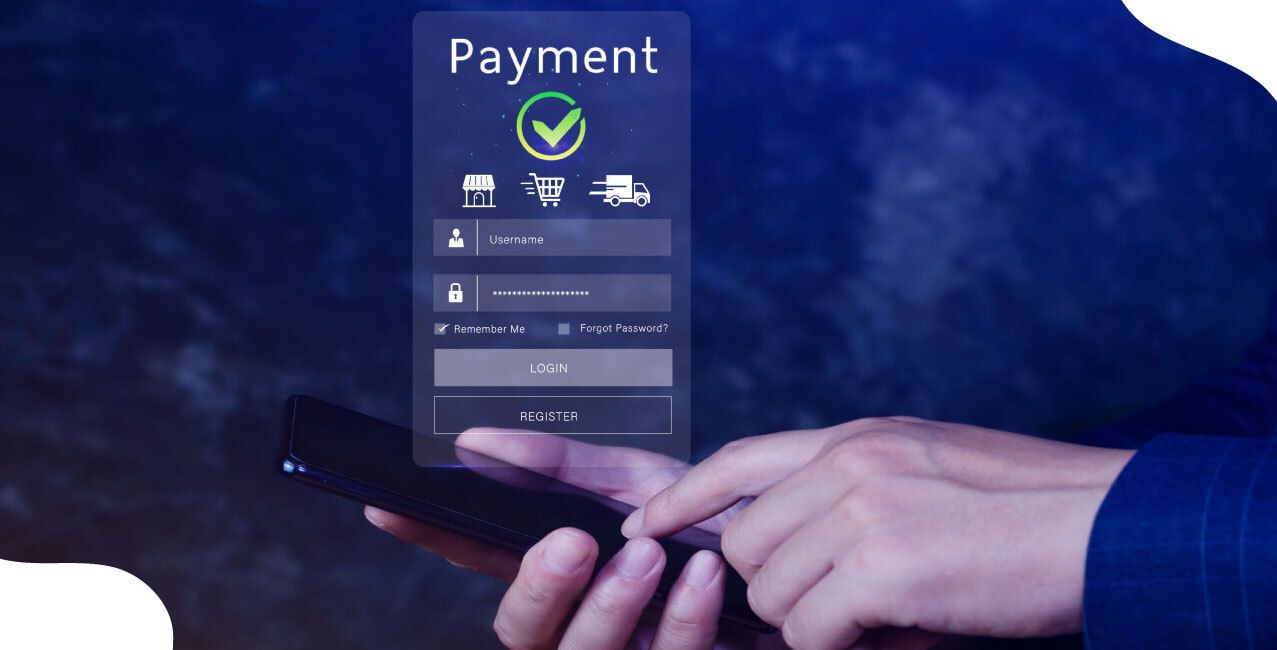
Author
LoansJagat Team
Read Time
8 Min
28 Mar 2025
How to Set Up an Emergency Fund That Actually Lasts – A Complete Guide
Chintu, a 29-year-old software developer from Delhi, was money-wise a "Jo aayega, woh jayega!" kind of guy.
He earned ₹80,000 every month, but savings? Ekdum zero! His whole salary went down the drain—₹25,000 on rent, ₹10,000 on Zomato-Swiggy, ₹15,000 on iPhone EMI, and the rest on Goa trips and weekend parties.
Then life bowled a "bouncer"—sudden job loss! Bank balance? Just ₹2,000. Next month’s expenses? ₹40,000. "Bhai, ab kya karein?"
In desperation, he borrowed ₹20,000 from friends, delayed credit card payments, and even considered selling his PlayStation. "Doston ka jugaad bhi ek din khatam hota hai!"
Here’s where numbers hit hard:
- Chintu's emergency expenses: ₹40,000/month
- Ideal emergency fund goal: ₹2,40,000 (3 months of expenses)
- His new savings plan: ₹10,000/month towards an emergency fund
His experience at his second job taught him important life lessons during the subsequent year. A structured savings system protects Chintu against significant financial challenges that may appear in the future.
What is the moral of the story? "Zindagi jeene ke liye paisa zaroori hai, par safe rehne ke liye emergency fund aur bhi zaroori hai!" You can start your financial journey by allocating only ₹5000 per month; otherwise, you will need to ask, "Bhai, thoda udhaar chahiye?" again.
Emergency Fund 101
Picture yourself in an action-packed Bollywood film, and just when you think all's well, a villain (aka financial crisis) strikes out of the blue! That's precisely how crises in the actual world function. Your emergency fund is your shield of protection, safeguarding you against debt pits and financial stress.
Now, let’s talk hard facts:
What is the ideal emergency fund size? It should contain 3 and 6 times your monthly expenses (if your monthly cost is ₹40,000, target between ₹1,20,000 and ₹2,40,000).
How to start? ₹5,000 per month invested toward building an emergency fund will gradually create a solid financial reserve.
- Where to keep it? An emergency fund should be kept in high-interest savings accounts combined with liquid funds because they provide instant access to funds when needed.
Kitna Paisa Chahiye? The ‘Jitni Chaadar Utne Pair’ Formula
Read More - How to Create an Emergency Fund
Financial institutions, including RBI and SEBI, recommend an emergency fund covering essential expenses for 3 to 6 months. Your emergency savings amount can differ depending on your lifestyle, where you live, and job stability.
Here's a detailed breakdown:
Category | Recommended Emergency Fund | Source |
Single, living in metro cities (Delhi, Mumbai, Bangalore) | ₹3,00,000 to ₹5,00,000 (₹50,000 to ₹80,000/month expenses) | Indian Economic Survey (2023) |
Married with kids (urban lifestyle) | ₹6,00,000 to ₹12,00,000 (₹1,00,000 to 2,00,000/month expenses) | National Sample Survey Office |
Self-employed/Freelancer | 6 to 12 months of expenses | Due to income uncertainty |
Senior Citizens (Retired, no pension) | ₹10,00,000 to ₹20,00,000 (For medical & living expenses) | Economic Times Report (2023) |
Middle-Class Family in Tier-2 and Tier-3 Cities | ₹3,00,000 to ₹6,00,000 (₹40,000 to ₹70,000/month expenses) | Business Standard Analysis (2024) |
High Net-Worth Individuals (HNI) | ₹25,00,000+ (Luxury lifestyle & investments) | Financial Planning Journal (2024) |
The 50-30-20 Rule: Bollywood’s Perfect Financial Masala Mix
Just like blockbuster Bollywood movies demand perfect action-romance-comedy ratios, your finances require a balanced combination. Financial experts endorse the 50-30-20 financial plan, a successful rule for everyone.
Through this rule, you can manage essential payments and pursue life experiences and financial savings in a balanced manner while avoiding worry or feelings of guilt.
Breaking Down The 50-30-20 Formula
Category | Percentage | What Does It Cover? | Examples |
Needs | 50% | Must-have expenses | Rent, groceries, EMIs, electricity bills, insurance, medical costs |
Wants | 30% | Lifestyle & Entertainment | Travel, shopping, Netflix, dining out, weekend parties |
Savings | 20% | Future security | Emergency fund, investments, retirement savings, extra loan payments |
Why Does This Rule Work Like A Bollywood Hit?
- Balanced Approach: You don't have to sacrifice today to save for tomorrow—dono ka combo pack milega!
- No Overthinking: You know precisely where your pay cheque is going, creating less financial stress.
- Flexibility: If you can't save 20% right now, begin with 10% and incrementally build—"Thoda thoda bachat, life bhar rahat!"
Chintu And The 50-30-20 Rule
Chintu earns a monthly salary of ₹80,000 as a finance professional. At one point his salary vanished just as quickly as a Goa weekend escape plan did. His life revolved around no savings while his credit cards tapped their maximum limit, and he was always anxious about unexpected expenses.
The 50-30-20 rule provided him with a way to allocate his money that prevented him from feeling broke. After understanding how to distribute the funds properly, he uses his salary for three purposes.
Category | Percentage | Chintu’s Monthly Allocation |
Needs (50%) | ₹40,000 | Rent (₹25,000), groceries (₹5,000), EMI (₹10,000) |
Wants (30%) | ₹24,000 | Netflix, Zomato, weekend trips, shopping |
Savings (20%) | ₹16,000 | ₹10,000 emergency fund, ₹6,000 investments |
Paisa Kahan Rakhein? Aapke Fund Ka Asli Adda!
Keeping your emergency fund in an inappropriate location makes it hard to access during emergencies. The main factor in successfully accessing emergency funds is to place them in a secure location that can be easily reached.
The best options for emergency funds in India have these main characteristics.
Option | Interest/ Returns | Best For | Top Picks | Liquidity |
High-Yield Savings Accounts | 3% to 7% | Quick access, stability | SBI, HDFC, ICICI, Kotak | Instant withdrawal |
Liquid Mutual Funds | 4% to 6% | Higher returns than savings | HDFC Liquid Fund, SBI Liquid Fund | 24-hour withdrawal |
Recurring Deposits (RDs) | 5% to 6% | Disciplined savings | Post Office RD, Bank RDs | Less liquid (penalty on early withdrawal) |
Chintu's Smart Move: He has ₹1,00,000 in a savings account (for ready access) and the balance in a liquid fund for higher returns—because "Paisa kamaana zaroori hai, par usko sahi jagah park karna aur bhi zaroori hai!"
Fixed Deposits vs. Liquid Funds: Which One Wins?
Most individuals think FD = Emergency Fund, but is it the best? Let's analyse:
Feature | Fixed Deposits (FDs) | Liquid Mutual Funds |
Safety | Very Safe (Bank-backed) | Low-risk (Invests in short-term assets) |
Returns | 5% to 7% (Varies by bank & tenure) | 4% to 6% (Market-linked but stable) |
Liquidity | Lower (Premature withdrawal penalty) | Higher (Withdraw within 24 hours) |
Best For | Long-term savings | Emergency funds & short-term goals |
For example, Chintu maintains ₹50,000 in FDs (for long-term security) and ₹1,00,000 in liquid funds for immediate access—because "Emergency fund ka kaam hai madad karna, tension dena nahi!”
Debt Ka Darr: Smart Ways To Use Your Fund For Debt Consolidation
Debt consolidation, which merges your existing high-interest loans into a new single loan with lower interest rates, can simplify your loan repayment process.
Also Read - Build an Emergency Fund
Through debt consolidation, Chintu solved his debt burden in the following ways:
Debt Type | Amount | Interest Rate | Monthly EMI | Total Interest Paid in 1 Year |
Credit Card Debt | ₹50,000 | 40% | ₹4,500 | ₹20,000 |
Personal Loan | ₹1,00,000 | 18% | ₹9,200 | ₹18,000 |
BNPL (Buy Now, Pay Later) | ₹30,000 | 28% | ₹3,500 | ₹8,400 |
Total Before Consolidation | ₹1,80,000 | 28% (average) | ₹17,200 | ₹46,400 |
After Consolidation: One-Interest Loan
Debt Type | Amount | New Interest Rate | New EMI | Total Interest Paid in 1 Year |
Debt Consolidation Loan | ₹1,80,000 | 12% | ₹9,800 | ₹18,000 |
How Did Chintu Benefit?
- EMI decreased from ₹17,200 to ₹9,800 per month—₹7,400 saved each month!
- Interest burden cut down from ₹46,400 to ₹18,000 annually—₹28,400 saved!
- No more dual due dates—single loan, single EMI, single fixed plan!
- Improved credit record—as all high-interest loans are paid off in one payment.
Biggest Blunders: Mistakes That Drain Your Fund Faster Than A Weekend Binge!
Using your emergency fund improperly will leave you penniless at the time you truly need it. The greatest errors that individuals commit are listed below:
Common Mistakes And Their Impact
Mistake | Why Is It a Problem? | Better Alternative |
Using it for shopping sprees | "New iPhone is an emergency, right? Wrong!" | Use a separate savings account for gadgets & luxuries. |
Investing in stocks | Emergency funds should be low-risk, not a gamble! | Park it in liquid funds or high-yield savings. |
Forgetting to refill it | Your fund is NOT a one-time deposit—if used, top it up again! | Set up monthly auto-transfers to rebuild it. |
Keeping it all in cash | Inflation will reduce its value over time. | Keep some cash but majority in a savings account/liquid fund. |
Using it for planned expenses | “Friend’s wedding next month = emergency? NO!” | Budget separately for events & vacations. |
Chintu's Reality Check!
- Chintu once spent his emergency fund on a vacation, thinking he could replenish it later.
- A bike accident that occurred suddenly landed him with a ₹20,000 hospital bill, but he had no backup!
- Now, he spends his emergency fund ONLY on genuine emergencies—"Mazze ke paise aur majboori ke paise alag hone chahiye!"
Side Hustles That Can Boost Your Fund Without Cutting Chai-Samosa
Savings tight? You don't need to sacrifice your daily chai-samosa routine because smart side hustles will help increase your earnings.
Best Side Hustles To Grow Your Emergency Fund
Side Hustle | Potential Earnings (per month) | Why It Works? |
Freelancing (Writing, Graphic Design, Tutoring) | ₹10,000 to ₹50,000 | Work from home, flexible hours, zero investment. |
Selling Handmade Items Online (Etsy, Amazon Handmade) | ₹5,000 to ₹30,000 | Monetise hobbies like art, jewellery, or home decor. |
Renting Out a Spare Room (Airbnb, PG accommodations) | ₹8,000 to ₹25,000 | Earn passive income with minimal effort. |
Online Coaching (English, Coding, Yoga, Dance) | ₹10,000 to ₹40,000 | Teach skills and charge per session. |
Stock Photography (Sell on Shutterstock, Adobe Stock) | ₹5,000 to ₹20,000 | Upload once, and earn royalties forever. |
Affiliate Marketing (Promote products, earn commission) | ₹5,000 to ₹50,000 | No product needed—just recommend & earn. |
Reselling on Meesho or Instagram | ₹5,000 to ₹25,000 | Buy low, sell high—great for fashion & accessories. |
Chintu’s Smart Hustle Plan
Chintu, a 9-to-5 employee, started freelance content writing on weekends, making ₹20,000 extra per month. He saved ₹5,000 in his emergency fund every month while still enjoying his chai-samosa lifestyle.
How To Replenish Your Emergency Fund Like A Pro
The first part of your emergency plan involves tapping into your savings, but rebuilding your fund remains the primary objective. The depletion of your emergency fund exposes you to upcoming financial emergencies, so restoration efforts must begin as soon as possible.
Strategy | How Does It Help? | Example Calculation |
Cut down on non-essential expenses | Free up extra cash without affecting basic needs. | Reducing dining out from ₹4,000 to ₹2,000 per month = ₹2,000 saved. |
Divert bonuses, tax refunds, and side hustle income | One-time income boosts can quickly refill your fund. | Annual bonus of ₹50,000 = Save ₹30,000 in your emergency fund. |
Treat it like an EMI and set up auto-transfers | Ensures disciplined savings every month. | Auto-transfer ₹5,000 monthly = ₹60,000 saved in a year. |
Sell unused items | Convert clutter into cash and boost savings. | Selling old gadgets and clothes = ₹10,000 extra. |
Increase savings percentage gradually | Helps you replenish the fund without feeling a financial pinch. | Start with 5% of income; increase to 10% over six months. |
Chintu's Game Plan to Rebuild His Fund
Chintu was forced to withdraw ₹50,000 from his emergency fund for a medical crisis. Rather than panicking, he:
- Reduced travelling and shopping by 3 months and saved ₹15,000.
- Spent his ₹20,000 tax refund to replenish the fund.
- Create an auto-repay of ₹5,000 a month, building ₹15,000 over three months.
In a matter of 6 months, his fund was in gear!
Conclusion
Chintu's journey in managing his finances is a warning for everyone—without an emergency fund, even a small disappointment can become a financial disaster. By adopting disciplined savings techniques such as the 50-30-20 rule, having money in the correct places, and avoiding common pitfalls, he changed his money game.
Discipline, regularity, and intelligent money management are the secrets to a successful emergency fund. No matter how much you're beginning with—₹5,000 per month or ₹500—the intention is to create a safety net that can outlast.
For at the end of the day, being financially secure means never having to ask, "Bhai, thoda udhaar chahiye?" ever again!
FAQs
- How much should I have in my emergency fund?
Financial planners recommend 3 to 6 months of necessary expenses, based on your lifestyle and employment stability.
- Where do I put my emergency fund?
Top choices are high-yield savings accounts, liquid mutual funds, and RDs for quick access.
- Can I invest my emergency fund in stocks?
No! Emergency funds must be low-risk and accessible—stocks are too unpredictable.
- How can I begin an emergency fund with a low income?
Begin small and save ₹500 to ₹1000 per month. Your savings will mount over the years as your earnings increase.
About the Author

LoansJagat Team
‘Simplify Finance for Everyone.’ This is the common goal of our team, as we try to explain any topic with relatable examples. From personal to business finance, managing EMIs to becoming debt-free, we do extensive research on each and every parameter, so you don’t have to. Scroll up and have a look at what 15+ years of experience in the BFSI sector looks like.

Quick Apply Loan
Subscribe Now
Related Blog Post


